

How To Customize The Lock Screen On Your iPhone 14 Or iPhone 14 Pro
source link: https://www.slashgear.com/1178135/how-to-customize-the-lock-screen-on-your-iphone-14-or-iphone-14-pro/
Go to the source link to view the article. You can view the picture content, updated content and better typesetting reading experience. If the link is broken, please click the button below to view the snapshot at that time.
How To Customize The Lock Screen On Your iPhone 14 Or iPhone 14 Pro
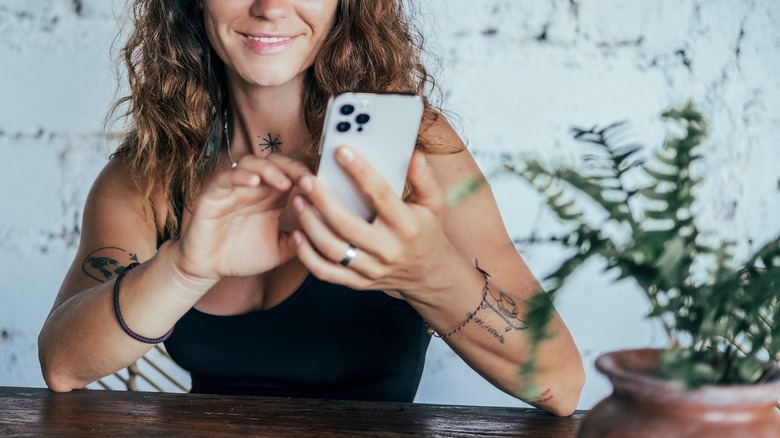
The iPhone has come a long way when it comes to its lock screen features. In previous iterations of iOS, the most you can do to spruce up your lock screen display was to use a live photo as a wallpaper, which can be played when you long-press the screen. Thanks to iOS 16, you can now do so many more useful and aesthetically pleasing things to your lock screen.
One of the more fun things you can do now is customize the elements that appear on an iPhone lock screen. You can apply a photo as a wallpaper and have the clock essentially become a part of it through layering. You can change font style and color. If you happen to have an iPhone 14 Pro or iPhone 14 Pro Max, you can use the always-on display feature and rig it so notifications and widgets are always visible on the lock screen.
Before taking a dive into the potential lock screen tweaks you can make on your iPhone 14 or iPhone 14 Pro, ensure that your device's operating system is up to date. To perform customizations easier, having Face ID completely set up is also highly recommended (via Apple).
Design a lock screen for different moods
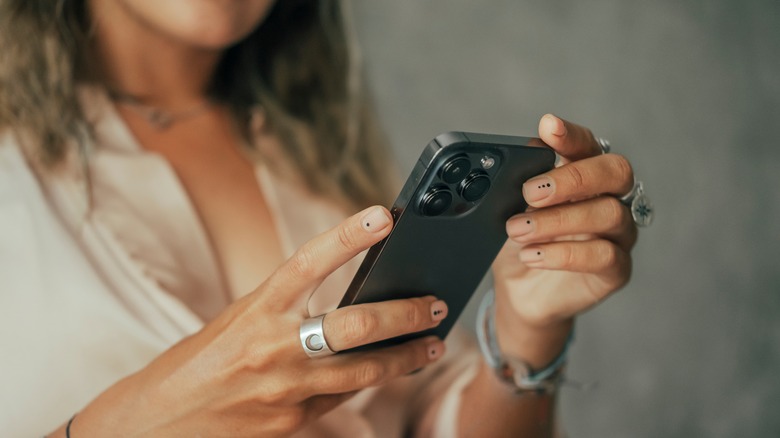
Creating a custom lock screen is a fairly easy process. Here's what you do to make your first one:
- Long-press the lock screen display until the Customize button shows up at the bottom of the page. If it doesn't show up, long-press the lock screen and type in your passcode.
- Hit the blue "+" icon at the bottom.
- Go through the options in the "Add New Wallpaper" gallery. There are many categories and suggestions to choose from. Simply tap one of the options to preview what it would look like as a lock screen.
- Tap on the date or time to modify the font and color.
- Hit "Cancel" to pick a different wallpaper style or tap "Add" to apply the current preview.
- Choose to either "Set as Wallpaper Pair" to apply the same changes to the home screen, or "Customize Home Screen" to choose a different wallpaper for it. If you pick the latter, you will need to pick a wallpaper — it can be a color, gradient, or photo — to use on the home screen and hit "Done" to finalize your lock screen design.
The lock screen you created should appear onscreen — just tap the new graphic to apply it as your iPhone 14 lock screen, hit Customize to make design changes to it, or select the blue "+" icon again to design a new one. You can create several lock screen designs, as many as 200 different styles (per Reddit).
Use a photo you took as your lock screen background
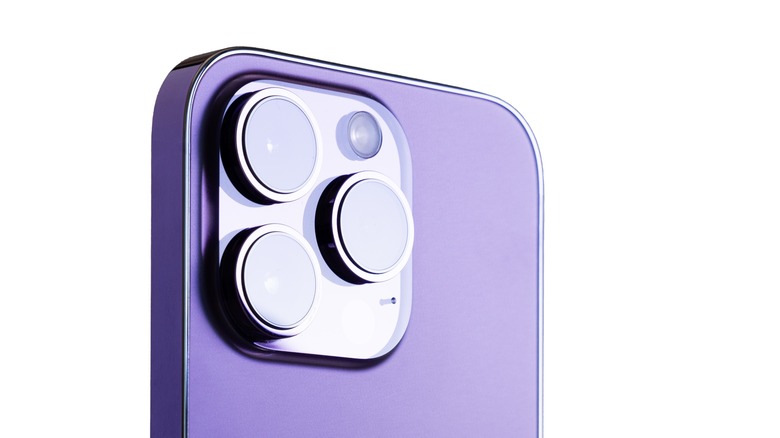
Choosing a photo from your iPhone camera roll is a great way of personalizing your lock screen. When you pick a wallpaper option that uses a photo, you can pinch it open or closed to zoom in or out, or drag the picture with two fingers to reposition it. You can swipe left or right on the screen to apply one of six available photo effects as well.
If you choose a photo that has people, pets, or the sky in it, you can try the layered effect by tapping the three-dot icon in the bottom-right corner of the screen and enabling Depth Effect. This feature will push the clock behind the subject and make it appear as part of the photo. Note that if the subject's position doesn't suit the effect or blocks too much of the clock, Depth Effect will be grayed out and will not be applicable.
Another way of using a photo as a lock screen is by selecting one from your library:
- Launch the Photos app.
- Pick an image from the camera roll and hit the share button in the bottom-left corner of the screen.
- Tap "Use as Wallpaper."
At this point, you can customize the font and color of the clock, reposition and resize the photo, apply Depth Effect, and apply a photo filter. Once satisfied, tap "Done," and decide whether to use the photo on both the home screen and lock screen.
Pick this wallpaper option to enjoy several lock screen photos
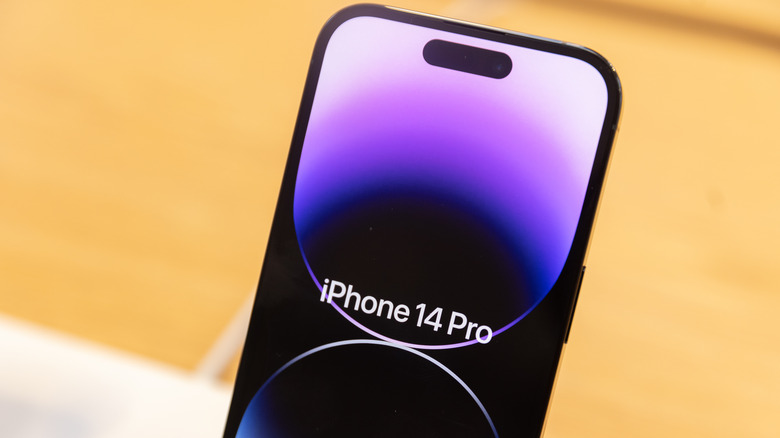
A really dynamic wallpaper option that utilizes your best photos is Photo Shuffle, which, like the name implies, cycles through various pictures and applies them as the lock screen background all throughout the day. When you pick Photo Shuffle from the "Add New Wallpaper" screen, you have the option of using featured photos, or manually selecting ones to use. You can also set the shuffle frequency so the lock screen photo updates hourly, daily, when the screen is tapped, or when it is locked.
While on the lock screen preview page, you can do the following:
- Tap on the screen to preview all selected photos and make position adjustments by pinching or dragging two fingers on the screen.
- Swipe left or right to apply a photo filter. Whatever you choose will be applied to all photos in the shuffle.
- Tap the date and time to modify their font style and color.
- Hit the gallery icon in the bottom-left corner of the screen to remove or add photos to the shuffle.
- Tap the three-dot icon to apply Depth Effect (if applicable) or modify the shuffle frequency.
Once satisfied with your customizations, tap Add to save the Photo Shuffle lock screen and decide whether to set it as a wallpaper for both the lock screen and home screen, or to use a different one for the latter. Finally, tap the Photo Shuffle lock screen graphic to apply it on your iPhone.
Pepper your lock screen with useful widgets and link a Focus mode while you're at it
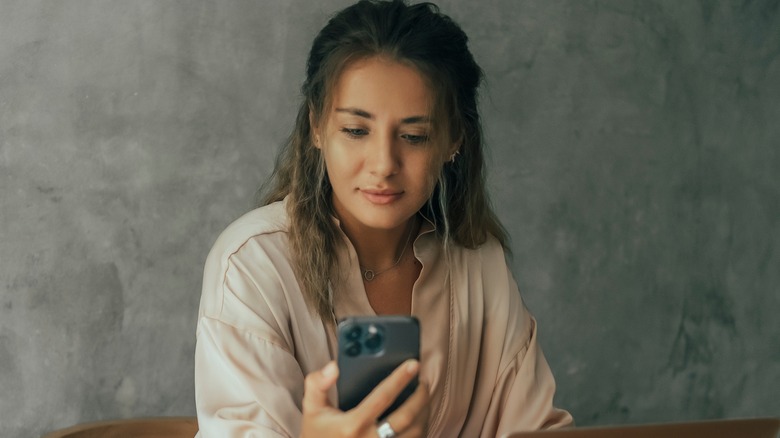
Widgets are a great way to see important app and other phone updates at a quick glance. The iPhone home screen is usually where you can use a variety of widget sizes, and have the more significant options filed under Today View (via Apple). However, you can pick a few of the more important apps and iPhone settings and add it to your lock screen as a widget:
- Long-press on the lock screen until the Customize button shows up, then tap it. You'll need to pick Lock Screen if you happen to be editing a design that's not a wallpaper pair.
- Hit the Add Widgets box.
- Tap or drag your desired widgets from the Add Widgets tray onto the spot where you want them.
The allotted widget space on the lock screen only has room for four square widgets or two rectangular ones. Hit the "-" in the corner of an added widget to remove and replace it with a different one. Once satisfied, close the Add Widgets tray and tap "Done" to save your chosen widgets.
Another useful thing you can do is associate a Focus mode with a specific lock screen design. Doing this will essentially apply that Focus' settings whenever the linked lock screen is used. To do this:
- Long-press the lock screen until the Customize button appears.
- Hit Focus on the wallpaper to pick one to link.
- Tap on a Focus, then hit the "X."
The chosen Focus mode should now be conveniently situated on the lock screen. When the linked lock screen is active, the chosen Focus will be turned on by default.
Make changes to your iPhone lock screen
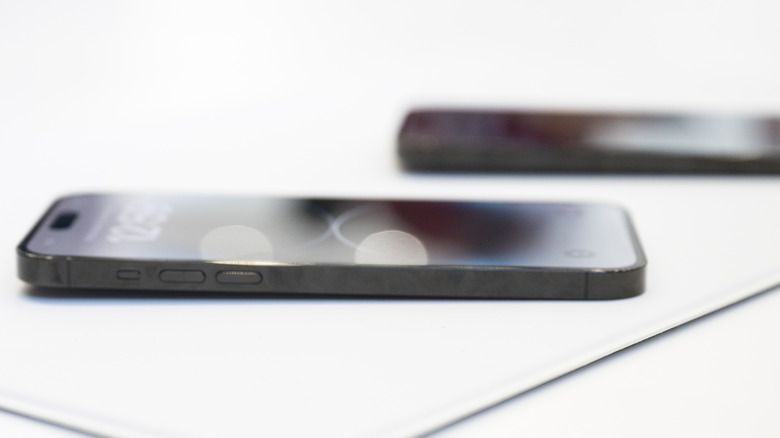
Long-pressing on your current lock screen background will not only make the Customize button appear, but it will also let you quickly switch between lock screen options that you've created thus far. You can add a new design by going to the right-most page on the lock screen carousel. You can also delete an existing one by swiping up on a design, tapping the trash can icon, and selecting "Delete This Wallpaper."
You can also change the way your lock screen and notifications appear. If you have an iPhone 14 Pro or iPhone 14 Pro Max, you can leave Always On Display enabled and ensure that your lock screen is always on so you can see the date, time, and any added widgets whenever you want to:
- Launch the Settings app.
- Go to Display & Brightness.
- Tap Always On Display and make sure the "Always On Display" toggle is enabled.
- Enable Show Wallpaper, Show Notifications, or both.
To change how notifications are displayed on the lock screen, follow these steps:
- Launch the Settings app.
- Head to Notifications.
- Under Display As, pick one from the three available views:
"Count" to show only the number of notifications.
"Stack" to separate notifications into groups.
"List" to see notifications in a list.
Whenever notifications show up, you can also change their layout by pinching on them while the lock screen is on display.
Finally, if you want to take it a step further than what Apple has to offer, you always have the option of enhancing your lock screen appearance by using third-party widget makers from the App Store.
10 Most Groundbreaking Apple Product Innovations
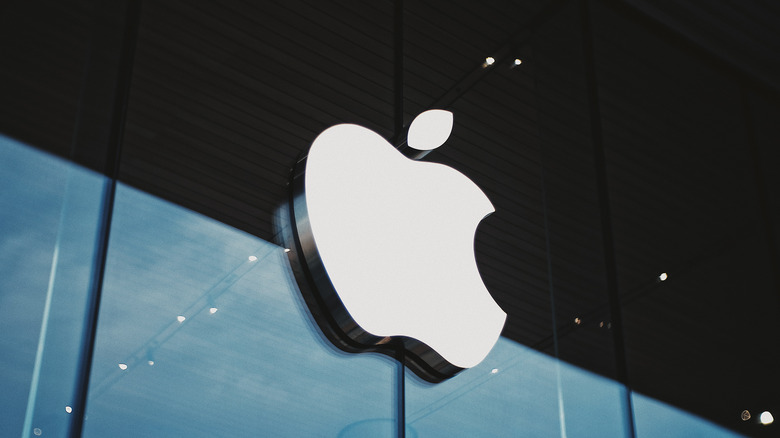
Regarded as one of the biggest tech companies in the world, Apple has long been famous for its amazing product lineup. Be it the design, technology, hardware, or software, Apple has been sweeping floors with its astounding innovations. What started as a computer company inside a small garage in 1976 became one of the biggest tech giants in the world, even hitting a record-breaking $3 Trillion market cap.
Apple ignites sparks in the industry with all-new game-changing products as well as its ability to toke an existing product in the market and completely reinvent it. Back in the '70s when Apple started selling computers, it brought a revolution in that space. The same happened during the first decade of this century when the tech giant entered the league of smartphones. During all this time, Apple has introduced many products with groundbreaking technology and has made significant breakthroughs. Here are the 10 best product innovations designed by Apple.
Apple II
Way before diving into smartphones and portable media devices, Apple was initially invested in making the most advanced personal computer systems. Launched in 1977, the Apple II was the world's first mass-produced home computing system. It was an updated version of Apple 1– the first computer system co-developed by Steve Jobs and Steve Wozniak. While Apple 1 was sold in a kit form that had to be assembled, Apple II was designed as a complete ready-to-use computer system with circuit machinery, a keyboard, permanent memory, and a power source.
The Apple II had a central processing unit that was based on MOS 6502 CPU and was offered with 4 KB of RAM, History Computer notes, although it could be increased up to 64 KB if required. A BASIC language processor that could support graphics and a colored monitor. The computer was first introduced with an external cassette storage system but was later replaced with an external floppy disk drive.
The motherboard of the Apple II even allowed expansion and had eight card slots for the user to expand the system with chips from Apple or any other third-party manufacturer. The Apple II sparked a huge demand for personal computers in the late '70s, and quickly became a hot selling product because of its advanced features and user-friendly interface. Apple produced around 6 million units of the Apple II till 1993.
iPhone
It has been a decade and a half since the first iPhone was unveiled to the world and although it was not the first smartphone in the market, it was definitely the most innovative and advanced one yet. Pitched as a mobile phone, music player, and internet device all in one, the iPhone was a big leap forward in the global smartphone community.
Until the release of the first iPhone in 2007, one had to have a computer system to access the internet and its applications. All of this changed with the original iPhone. Not only did it put the internet in everyone's pocket, but it also made applications such as sending emails and browsing the internet much easier to use. The full-touch QWERTY keyboard on the iPhone made the experience even better.
Apart from the internet, the iPhone made a major breakthrough in the domain of mobile photography. It was equipped with a 2MP high-quality back camera and along with the high-efficient photo management system, photography became a daily habit instead of just a hobby. All the subsequent iPhones released had significantly improved camera systems and today the iPhone is regarded as the best camera smartphone out there. iPhones have now become a tool for creative professionals and its premium design and advanced technology is appraised worldwide. Undoubtedly, it is the most revolutionary Apple product that has helped the company to become the biggest tech giant in the world.
Like many new things, this too was frowned upon when iPads were introduced in 2010. While people made a lot of jokes about the name and how iPads were basically low-quality laptops, Apple had the last laugh when it sold $67.7 billion worth of the product. iPads worked as a space between a laptop and a smartphone by being a not-so-little but valuable device for streaming, surfing the web, making notes, and reading e-books (via Business Insider).
Apple redefined the concept of tablets with its confident designs and refined minimalism. Bringing the computing experience to an iPad is what separates Apple from other brands. Providing a strong battery life without the bulk weight made these products the best in the game. The original iPad offered an aluminum build with square edges and 64GB storage capacity. The iPad Pro (2021) came with a Liquid Retina XDR display and a 2TB storage option (via The Verge).
Apple clearly stepped up and changed the game with its sleek design and new upgrades throughout the years. From hotel staff to children studying through online learning, iPads have made a significant impact on daily lives and have made online learning, reading, and streaming more fun and simple.
Out of all the innovative products Apple has launched throughout the years, iPod paved the way to success for Apple in 2001. A revolutionary product of its time, the iPod beat out the 90s MP3 players with its incredible ability to hold 1,000 songs in your pocket. It revolutionized the world of music and beat out all of its competitors (the Sony Walkman didn't stand a chance).
The iPod expanded the experience of listening beyond anything mankind had experienced in that era and allowed people to enjoy music anytime, anywhere, just by plugging their headphones. From introducing a brand new colored screen to the iPod touch, Jobs covered many horizons of technological advancements. In 2007, 48% of Apple's revenue came from the sale of iPods which is why over the next seven years, many changes and upgrades were made to the iPod (via The Guardian).
What made the iPod such a huge success was its design. The non-touch iPod models sported the revolutionary click wheel that used a combination of touch and buttons to navigate through the device. The iPod Touch introduced in 2007 was the biggest level-up in the history of iPods. It was basically an iPhone with a 3.5-inch touch screen and carried out all its functions, except for telecommunication. iPod Touch even featured, for the first time, Wi-Fi connectivity and could carry all the internet applications such as web browsing and music streaming on services like YouTube.
AirPods
Back in 2016 when Apple released the iPhone 7 lineup, there was a significant omission in the body of the phones — the 3.5mm headphone jack was gone. The whole world was shocked by the move but to everyone's surprise, Apple introduced something that not only compensated for the removal of the headphone jack but started a whole new revolution in the headphone industry. Apple released the AirPods, the first truly wireless earphones.
AirPods was a massive breakthrough considering the revolutionary design and innovative technology. It was similar to the earlier wired earphones offered by the company except for the fact that it was completely wireless and used Bluetooth technology to pair with any existing media device such as a smartphone, tablet, or personal computer. A case magnetically held the AirPods together when not in use as well as charged them at the same time. Pairing them with an Apple device was a doddle — one just had to open the charging case in front of the device and an automatic popup would occur on the screen telling that the AirPods have been paired.
The entire pairing process takes only a few seconds thanks to Apple's highly efficient W1 chip. The AirPods were also equipped with groundbreaking optical sensors that could identify whether the headphones were inside the ears of a person or not and could play/pause the music accordingly. Almost every phone manufacturer followed this suit and today leading headphone manufacturers have truly wireless headphones in their lineup.
MacBook
The MacBook has made productivity enjoyable, a gamechanger for creative professionals and students. After its debut in 1991, the MacBook line came a long way from its first-ever laptop, PowerBook 100 to the MacBook Air 2022, with features people could only imagine in the 90s. After all the redesigns and improvements, the PowerBook G4 came in a slim design and was considered ahead of its time. This led to Apple's famous slim design for all the MacBook models.
The MacBook lineup consists of two variants, Air and Pro, and while both are designed to offer ultimate performance, their target audience is different. The MacBook Air packs all the industry-leading specs into the thinnest physical body and is best suited for students and people who mildly use the system for work. The Pro model is much more aggressive in terms of specs and offers better performance and graphic output specially made for working professionals such as studio artists and sound engineers.
Today, the MacBook has become the industry standard for laptops and has gained the spotlight when it comes to high-end notebooks, and has considerably contributed to the revenue share of the brand.
AirTag
Perhaps the most unique product in Apple's ecosystem, AirTag is a revolutionary tracking device built to act as a key finder for physical objects such as keys or bags and can be even used as a pet tracking device. It's a round-shaped wireless tracker small enough to fit in your denim's smallest pocket.
AirTag works with the iPhone's built-in iOS app Find My Phone over Bluetooth connectivity. Pairing an AirTag is as simple as pairing AirPods, just bring an AirTag in front of an iPhone and it will automatically detect the device and set it up. It has a built-in U1 chip that allows precise location and tracking and gives accurate directions and distance between the AirTag and iPhone. There is even a small built-in speaker that generates beep sounds for locating the AirTag whenever it goes out of range (via Apple)
If an AirTag is lost, users can put it into the 'Lost Mode' where the app will automatically detect and notify the owner about its location whenever the AirTag is in range. If it is found by anyone else, they can connect the AirTag with any NFC-capable device and they will directly be taken to a unique website with the credentials of the owner. Any tracking device can be used for unethical tracking and stalking and to prevent this, AirTags can alert anyone through beep sounds that it has been traveling with them and a notification would go to the nearest NFC device in range.
Apple Watch
In 2014, Apple released the most personal accessory in its product lineup — the Apple Watch. Pitched as a smartwatch with dedicated health and fitness features, Apple did not have the first mover's advantage, as smartwatches were already a thing by then. But what Apple did was far more amazing than introducing a whole new product — it delivered the most advanced specs in an ultimate design that went on to disrupt the watch industry. Interestingly in 2019, Apple watch outsold the whole Swiss-watch market which is regarded as one of the most reputation watch industries globally (via CNBC).
What made the Apple Watch stand out from the crowd was the fact that it could fit so many advanced sensors along with advanced technology in such a small form factor. Basically, you get a supercomputer right on your wrist that can track all your fitness and health-related data along with all the connected features of a smartwatch such as instant notifications, receiving calls, quick access to the photo library, and much more.
While other fitness watchmakers could merely collect data related to the body's calorie burnout and steps walked throughout the day, the Apple Watch's advanced sensors could measure your heart rate. Eventually, further iterations of the Apple Watch came with much more advanced systems that can now measure a person's ECG and even Oxygen levels. All the data collected could simply be downloaded in a PDF report.
It's no surprise to hear the voice of an AI in almost all gadgets in 2022. Introduced as a built-in system in iOS in 2011, Siri has been through quite the evolution in the last decade. From AI being used in movies as a love interest to its growth to "human-like" qualities. Siri became the first virtual assistant with a voice and made interaction with gadgets more "human-like."
Using Speech Recognition and Natural Language Processing, Siri became a useful tool and could be operated orally with a two-word wakeup call "Hey Siri." Since its launch, Siri has evolved and can answer all questions related to the information found on the internet. It can also be used to launch apps and navigate through settings and can carry out tasks like setting an alarm or calling a person. There have been impressive upgrades to Siri–from language translation, speech personalization, and faster processing, there is always room for advancement considering how AI is an ever-growing area.
The AI virtual voice assistant industry was ignited by Apple's Siri during the launch of the iPhone 4s and since then, the technology has risen high in the sky. Siri paved the way for many more players in this domain, including Amazon's Alexa and Google Assistant – two renowned AI voice assistants that currently rival Apple's Siri.
Mac Pro
Apple's products have been renowned as tools for creative professionals and in 2019, the company took the brand statement to a whole new level by launching the Mac Pro — an ultimate machine designed specifically for professional workstations. The Mac Pro is essentially a central processing unit that pushes all the limits and abilities of a MacBook and even an iMac.
The Mac Pro has been specifically crafted for ultimate performance and is designed for optimum expansion and configuration according to the user's needs. It features the industry-leading Xeon processor with up to 28 cores and 8 PCI expansion slots onboard. Furthermore, it sports an industry-leading graphic architecture for best editing purposes and has the game-changing accelerator card- Apple Afterburner that can play back up to 3 different 8K ProRes Raw videos simultaneously! (via Apple)
It also features a programmable ASIC that can efficiently decode high-resolution videos at 6.5-billion pixels per second. For people working on advanced and extensive projects that include massive data, the Mac Pro features a multi-channel memory architecture with 1.5-TB of internal storage and 12 physical DIMM slots. The entire MacPro is enclosed by a stainless-steel frame that can be removed easily to get a 360-degree view and access each part of the machine.
Recommend
About Joyk
Aggregate valuable and interesting links.
Joyk means Joy of geeK